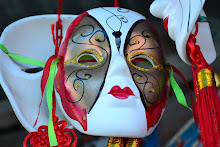Dalit is a self-designation for a group of people traditionally regarded as low caste or untouchables (
outcastes). Dalits are a mixed population of numerous caste groups all over South Asia, and speak various languages. It is impossible to differentiate between Dalits and the various other caste groups on the basis of phenotypes or genetics Consequently, population statistics remain controversial and are often subject to political agendas.
The caste system is a social construct among South Asian peoples, and has no genetic basis
While the caste system has been abolished under the
Indian constitutionthere is still discrimination and prejudice against Dalits in South Asia. Since Indian independence, significant steps have been taken to provide opportunities in jobs and education. Many social organizations have encouraged proactive provisions to better the conditions of dalits through improved
education, health and employment.
Etymology
The word "Dalit" comes from the
Sanskrit language, and means "ground", "suppressed", "crushed", or "broken to pieces". It was first used by
Jyotirao Phule in the nineteenth century, in the context of the oppression faced by the erstwhile "untouchable" castes of the
twice-born Hindus Gandhi's coinage of the word
Harijan, translated roughly as "Children of God", to identify the former Untouchables. The terms "
Scheduled castes and scheduled tribes" (SC/ST) are the official terms used in Indian government documents to identify former "untouchables" and tribes. However, in 2008 the National Commission for Scheduled Castes, noticing that "Dalit" was used interchangeably with the official term "scheduled castes", called the term "unconstitutional" and asked state governments to end its use. After the order, the
Chhattisgarh government ended the official use of the word "Dalit"
Adi Dravida", "Adi Karnataka" and "Adi Andhra" are words used in the states of
Tamil Nadu,
Karnataka and
Andhra Pradesh, respectively, to identify people of former "untouchable" castes in official documents. These words, particularly the prefix of "Adi", denote the aboriginal inhabitants of the land.
 slum
slum